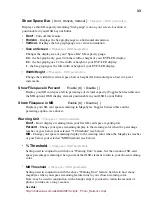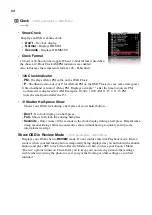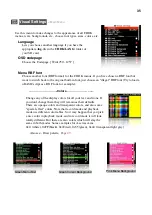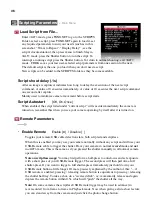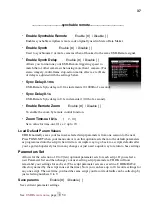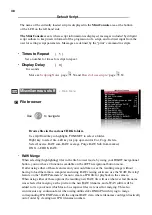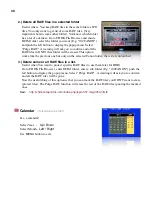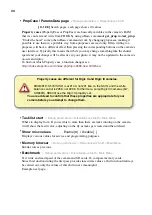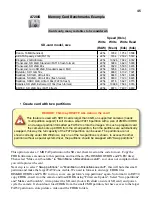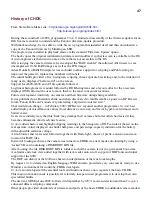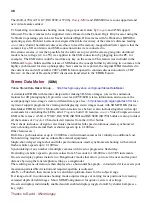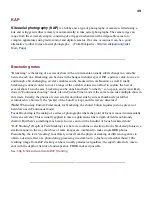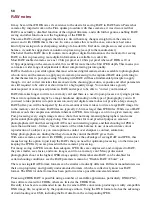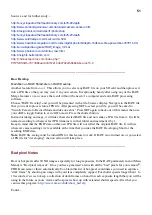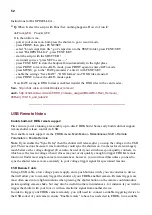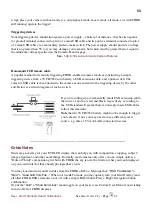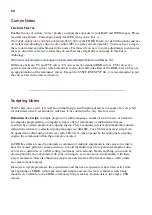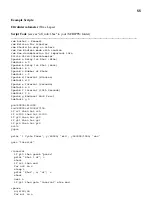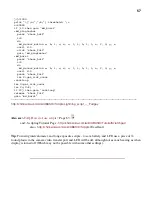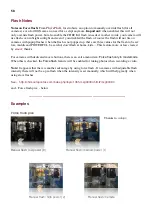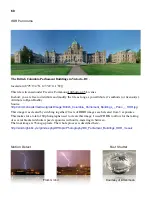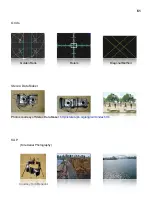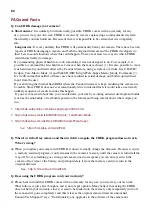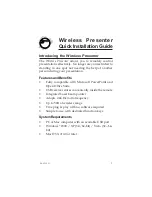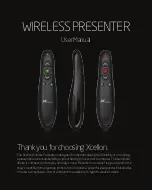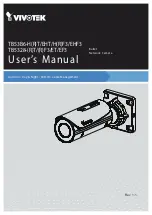
http://stereo.jpn.org/eng/sdm/chdk.htm
http://stereo.jpn.org/eng/index.html
During the second half of 2006, programmer
'
VitalyB
'
studied a disassembly of the firmware update for an
IXUS camera in order to understand the Canon
®
firmware-update procedure.
With that knowledge, he was able to write his own program that installed itself and then downloaded a
copy of the Canon
®
firmware by blinking an LED.
The program was installed in playback mode via the standard 'Firmware Update' option.
The hack copies the original initialization firmware and modifies it so that less ram is available to the OS.
A custom process is then run in an area of ram that is not accessible to the OS.
After studying the camera firmware, he developed the "RAW enabler" that allowed A610 users to save
uncompressed 10-bit RAW images as well as the JPG images.
Adam Dunkel's uBASIC interpreter was included to allow support for scripting and Pablo d'Angelo
improved the parser to replace line-numbers with labels.
The initial builds provided a 'live' histogram, scripting, three-exposure-bracketing and, to the irritation of
many users, displayed "hello world" on the screen.
Support for A620, A630 and A710is quickly followed.
Log/linear histograms were added followed by RGB histograms and a layout editor for the on-screen
displays (OSD) allowed the user to move them to the most convenient locations.
Future development would rely on cameras and their firmware dumps being available.
It was published on a Russian website and when 'discovered' in mid December, a poster on DP Review
forum 'Canon Talk' said "sounds very interesting. surprised no interest in it."
That would soon change ... in February 2007 'DP Review' reported another programmer
'GrAnd'
had
added display of miscellaneous values (focal distance, zoom step and factor, hyper-focal distance) and a
battery meter.
Users were initially wary that this 'hack' may damage their cameras but after others had tested it they
became enthusiastic about each new feature.
GrAnd
added shadow and highlight-clipping warnings to the histogram, a DOF calculator (based on the
real aperture-value) displayed on shutter half-press and percentage-capacity indication for the battery
with adjustable min/max voltage.
A file-browser and text-reader followed together with 'flash-light', choice of prefix, extension and save-
location for RAW files.
Instead of loading each time the camera was turned-on, CHDK was next made auto-loading by using a
'locked' SD card containing a DISKBOOT.BIN file.
After booting, the file DISKBOOT.BIN is 'hidden' so that the camera is not in a permanent boot-state.
A calendar and clock were added together with text-reader auto-scroll, support of RBF fonts and initial
support for the S3IS.
The DOF calculator for the S3IS was based on interpolation of the lens focal-lengths.
By request,
GrAnd
started an English-language WIKI and also provided a very convenient, ready-to-use
Windows environment for would-be CHDK developers.
GrAnd
also developed all the essential tools and functions that we now regard as the basic CHDK.
This major innovation made it possible for relatively inexperienced programmers to develop their own
specialized builds.
The first was SDM in June 2007, followed in September by
MX3
's motion-detection and then
Fingalo
's
enhanced uBasic scripting commands.
Other people provided downloads of firmware and ports of the basic CHDK to additional camera models.
47
Summary of Contents for CHDK
Page 1: ...CHDK Extra Features For Canon Point and Shoot Cameras User Quick Start Guide...
Page 72: ...Notes...
Page 73: ...Notes...
Page 74: ...Notes...
Page 75: ...Notes...

